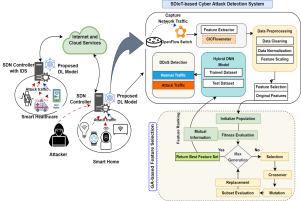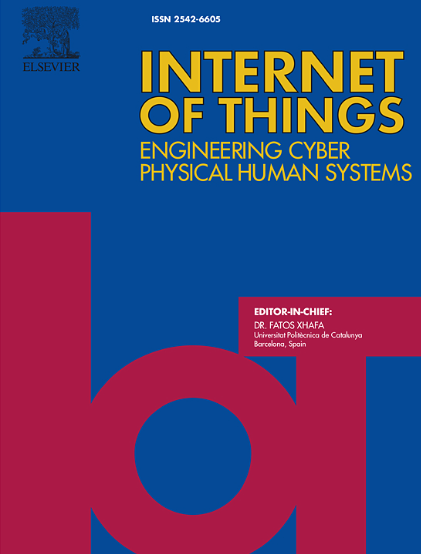A combination learning framework to uncover cyber attacks in IoT networks
IF 6
3区 计算机科学
Q1 COMPUTER SCIENCE, INFORMATION SYSTEMS
引用次数: 0
Abstract
The Internet of Things (IoT) is rapidly expanding, connecting an increasing number of devices daily. Having diverse and extensive networking and resource-constrained devices creates vulnerabilities to various cyber-attacks. The IoT with the supervision of Software Defined Network (SDN) enhances the network performance through its flexibility and adaptability. Different methods have been employed for detecting security attacks; however, they are often computationally efficient and unsuitable for such resource-constraint environments. Consequently, there is a significant requirement to develop efficient security measures against a range of attacks. Recent advancements in deep learning (DL) models have paved the way for designing effective attack detection methods. In this study, we leverage Genetic Algorithm (GA) with a correlation coefficient as a fitness function for feature selection. Additionally, mutual information (MI) is applied for feature ranking to measure their dependency on the target variable. The selected optimal features were used to train a hybrid DNN model to uncover attacks in IoT networks. The hybrid DNN integrates Convolutional Neural Network, Bi-Gated Recurrent Units (Bi-GRU), and Bidirectional Long Short-Term Memory (Bi-LSTM) for training the input data. The performance of our proposed model is evaluated against several other baseline DL models, and an ablation study is provided. Three key datasets InSDN, UNSW-NB15, and CICIoT 2023 datasets, containing various types of attacks, were used to assess the performance of the model. The proposed model demonstrates an impressive accuracy and detection time over the existing model with lower resource consumption.

揭示物联网网络攻击的组合学习框架
物联网(IoT)正在迅速发展,每天连接的设备数量越来越多。多样化、广泛的网络和资源有限的设备容易受到各种网络攻击。在软件定义网络(SDN)的监控下,物联网通过其灵活性和适应性提高了网络性能。人们采用了不同的方法来检测安全攻击,但这些方法往往计算效率低下,不适合这种资源受限的环境。因此,有必要开发高效的安全措施来应对一系列攻击。深度学习(DL)模型的最新进展为设计有效的攻击检测方法铺平了道路。在本研究中,我们利用遗传算法(GA),将相关系数作为特征选择的适应度函数。此外,互信息(MI)也被用于特征排序,以衡量它们对目标变量的依赖性。选定的最佳特征被用于训练混合 DNN 模型,以揭示物联网网络中的攻击。混合 DNN 集成了卷积神经网络、双向门控递归单元(Bi-GRU)和双向长短期记忆(Bi-LSTM),用于训练输入数据。对照其他几个基准 DL 模型,对我们提出的模型进行了性能评估,并提供了一项消融研究。三个关键数据集 InSDN、UNSW-NB15 和 CICIoT 2023 数据集包含各种类型的攻击,用于评估模型的性能。与现有模型相比,所提出的模型具有更高的准确性和更短的检测时间,而且资源消耗更少。
本文章由计算机程序翻译,如有差异,请以英文原文为准。
求助全文
约1分钟内获得全文
求助全文
来源期刊

Internet of Things
Multiple-
CiteScore
3.60
自引率
5.10%
发文量
115
审稿时长
37 days
期刊介绍:
Internet of Things; Engineering Cyber Physical Human Systems is a comprehensive journal encouraging cross collaboration between researchers, engineers and practitioners in the field of IoT & Cyber Physical Human Systems. The journal offers a unique platform to exchange scientific information on the entire breadth of technology, science, and societal applications of the IoT.
The journal will place a high priority on timely publication, and provide a home for high quality.
Furthermore, IOT is interested in publishing topical Special Issues on any aspect of IOT.
 求助内容:
求助内容: 应助结果提醒方式:
应助结果提醒方式:


